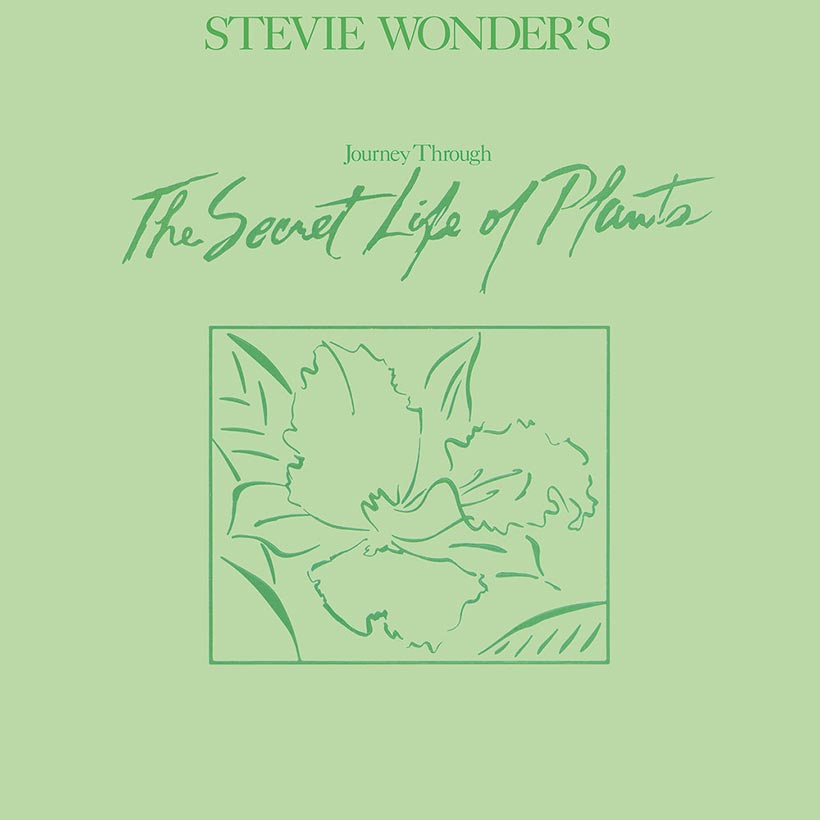Stevie Wonder’s Journey Through The Secret Life Of Plants was issued as a double-album soundtrack on October 30, 1979. And while “What is this?” may be a perfectly valid question in some cases, it wasn’t appropriate here. A far more pertinent inquiry would have been: “Hang on a minute. How can a guy who cannot see, write music for a movie, a predominantly visual medium?” Think about it for a moment. The answer, of course, is: this is Stevie Wonder. What can’t he do?
Listen to Journey Through The Secret Life Of Plants on Apple Music and Spotify.
An anomaly among Stevie Wonder albums
Journey Through The Secret Life Of Plants was Wonder’s first new album for the best part of three years. He hadn’t intended it as “the new Stevie Wonder album” as such, more as a soundtrack he’d created for the documentary of the same name, but Motown, hungry for fresh material from its confirmed musical genius, pretty much marketed it as a new Stevie opus.
That triggered a certain amount of confusion: where was this record’s “Superstition,” “Sir Duke” or “Creepin’”? Well, there was a hit, a US No. 4, in “Send One Your Love,” while two further singles were drawn from the collection. The album sold well at first – fans were as hungry for Stevie material as his record company was – but clearly it was no Fulfillingness’ First Finale. Journey Through The Secret Life Of Plants remains an anomaly in Wonder’s 70s catalog: a little-visited cranny in his highly original musiquarium, full of lengthy instrumentals; but it has its highlights – and some are very high.
The recording of Journey Through The Secret Life Of Plants
To answer the big question: Stevie had the producer describe what was happening on screen, scene by scene, as a rough cut of the movie played, while the Motown genius worked on composing the music, and the engineer, Gary Olazabal, assisted with defining the length of each piece. Simple, when you’re Stevie Wonder.
Journey Through The Secret Life Of Plants
Journey Through The Secret Life Of Plants starts slowly; you’re immediately aware that it’s going to be high on soundscapes and mood, and low on funk. A lot of it, such as “Voyage To India,” is essentially classical in tone – in this instance, both Western and the classical music of the subcontinent. There’s low-key mystery in “Earth’s Creation” and the tinkling “The First Garden” opens like a horror movie theme. If you’re looking for a reference point within African-American music, it would be Miles Davis’ “Then There Were None,” before the piece warms up with harmonica: a hint that more regular Stevie-ish music was to come? For sure, as the vocal track “Same Old Story” arrives, with its melody like a samba bringing out Stevie’s more soulful side for the first time here.
“Venus Flytrap And The Bug” offers a touch of “Peter And The Wolf,” though more like the Jimmy Smith version than an orchestral one, slipping along as twilight jazz, with Stevie buggin’ vocally like like a Disney cartoon villain. “Ai No Sono” uses synth-like sedate harpsichord music, with chanting children adding to its Japanese vibe. Then comes a bomb in “Power Flower,” co-written with Michael Sembello and delivering a feel that would have fitted Songs In the Key Of Life. A magnificent slow jam with touching harmonica and a glorious rumble in the bottom end, this is one of the high points for those seeking the flavor of the standard 70s Stevie.
Another thriller arrives with “Race Babbling,” an uptempo tune a tickle or two ahead of its time, with superb hurtling basslines and mad vocoder suggestive of early electro, 80s Herbie Hancock, and, inevitably, Kraftwerk – though its sense of a free flow was rare in the electronic music of that era. The hit “Send One Your Love” is a lovely Stevie ballad, but, as is often the case on … The Secret Life Of Plants, it lacks a hint of funk in the bottom end. “Outside My Window” has a similar issue for fans of standard Stevie: it has that lovely rolling feel of “Isn’t She Lovely,” but you’re waiting for a tougher drum beat to kick it along harder.
Glowing with warmth, “Black Orchid” is another little miracle befitting Stevie’s “classic” albums (the lyric is laden with more than just horticultural matters). The whimsical ballad “Come Back As A Flower” also has shades of early-70s Stevie; sung by Syreeta, it would have passed muster perfectly on her second album. And once you’re used to the absence of definite grooves, it comes as a bit of a surprise when the driving “A Seed’s A Star’/“Tree Medley’ delivers grooves by the trug-load, offering echoes of the funk-Latin vibe of “Another Star.” “Finale” reveals further dancefloor vibes with chugging synth and hissing drum machine beats.
The reception and legacy of Journey Through The Secret Life Of Plants
Journey Through The Secret Life Of Plants is an exceptionally long suite of often lengthy mood pieces in which “songs” are few and far between, and grooves in the funky sense rarely crop up. But there is beauty here. Stevie’s unquenchable desire for experimentation and love for melody are in full effect, and some of the magic and mystery of the botanic planet is evoked.
Stevie’s obsession with electronics allied to the sort of jazzy chords he favored are in evidence throughout; this could not be the work of anyone else. It’s a soundtrack, not really a Stevie Wonder album, but the fact that there’s a sprinkling of songs worthy of Stevie’s classic albums amid the scene-setting sounds is a bonus. It may be a curiosity, but the album’s very existence was some kind of wonder in itself, and the love and almost obsessional nurture that went into it sing out of every track.
Journey Through The Secret Life Of Plants can be bought here.




